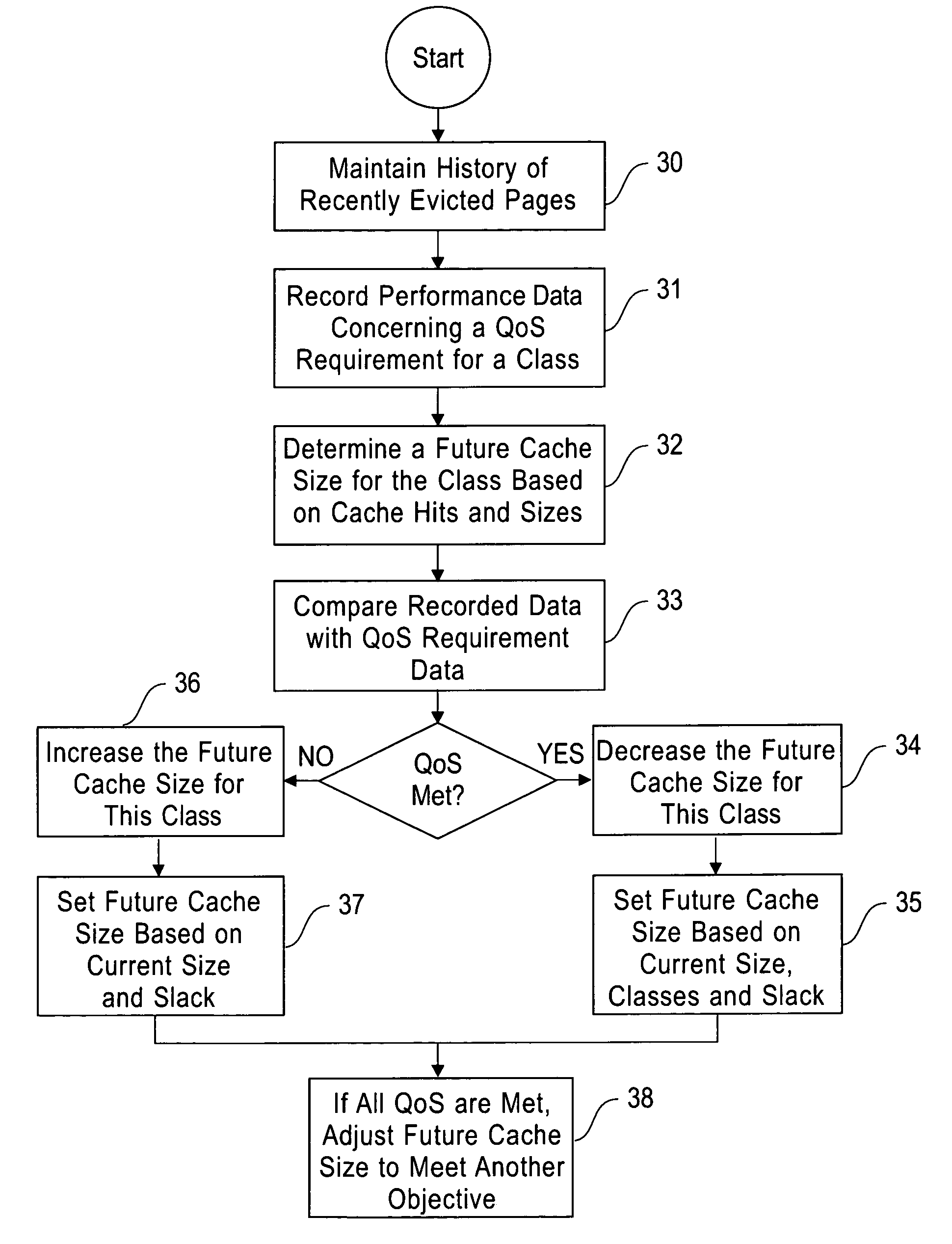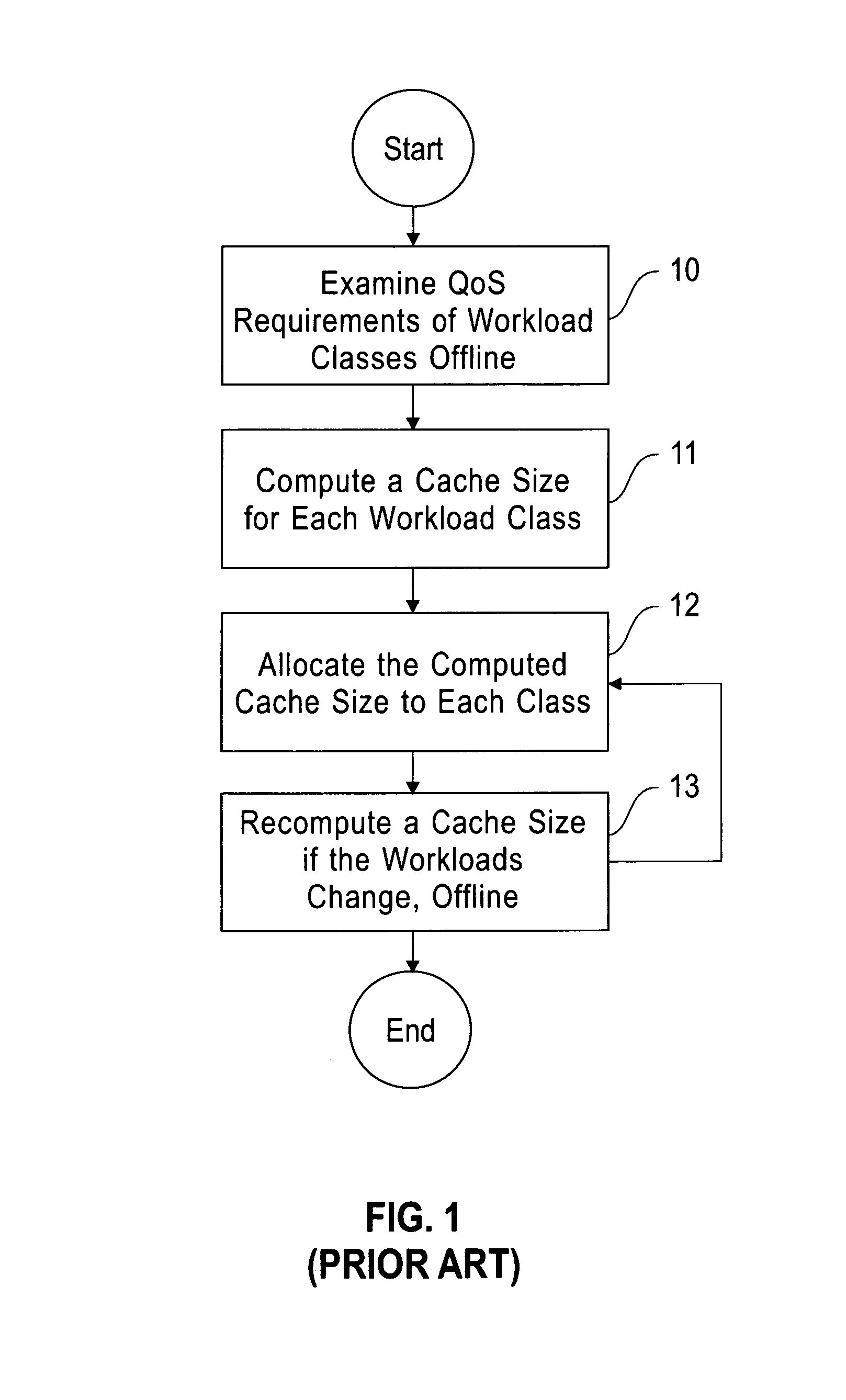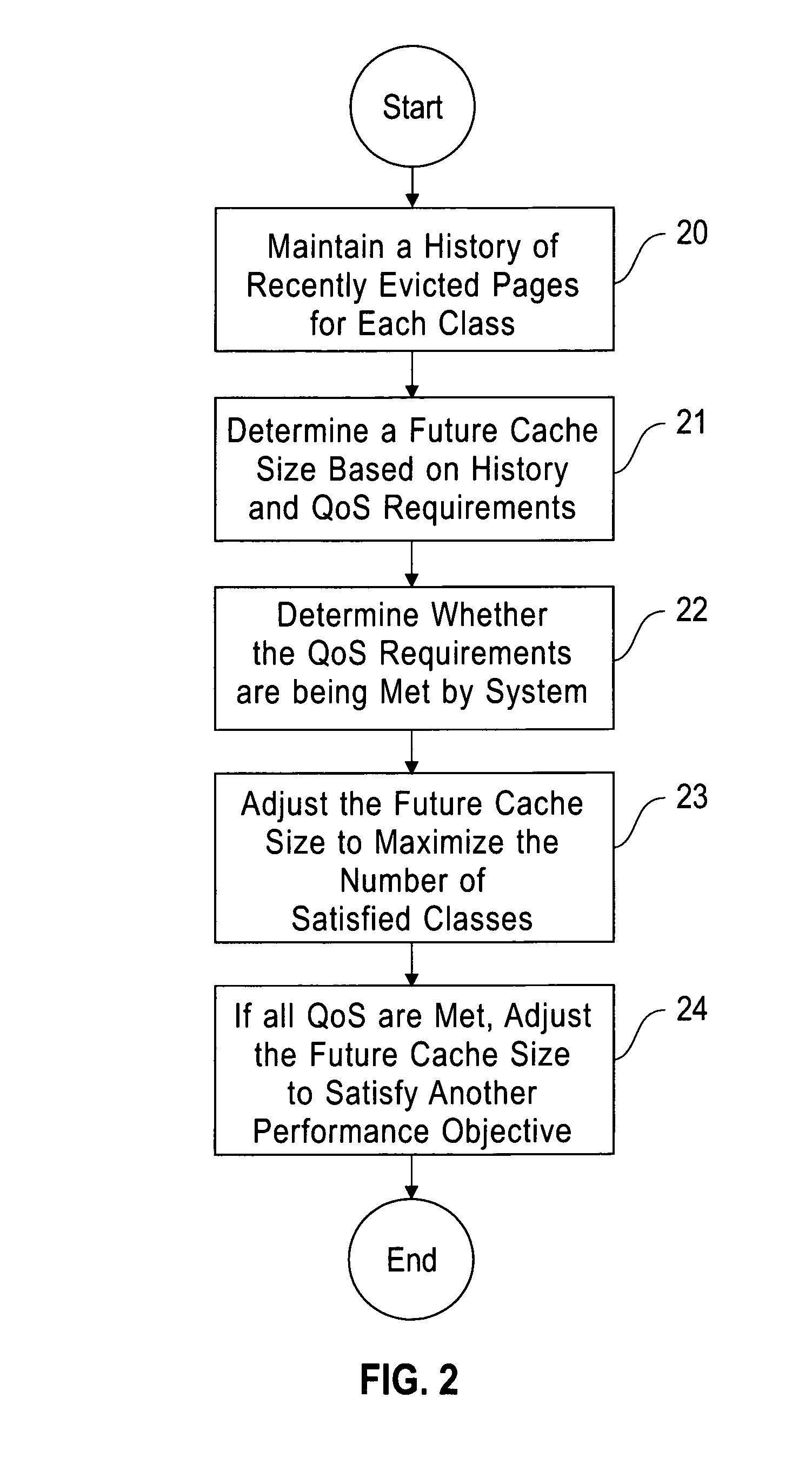System and method for dynamically allocating cache space among different workload classes that can have different quality of service (QoS) requirements where the system and method may maintain a history of recently evicted pages for each class and may determine a future cache size for the class based on the history and the QoS requirements
a dynamic allocation and workload technology, applied in memory allocation/allocation/relocation, multi-programming arrangements, instruments, etc., can solve the problems of insufficient investigation of cache allocation techniques to provide qos differentiation, unadjusted management of storage resources, and inability to achieve immediate performance benefits, etc., to achieve the effect of maximizing the number of classes
- Summary
- Abstract
- Description
- Claims
- Application Information
AI Technical Summary
Benefits of technology
Problems solved by technology
Method used
Image
Examples
Embodiment Construction
[0017]The invention will be described primarily as a computer storage system and method for dynamically allocating cache space among multiple workload classes having different quality-of-service (QoS) requirements. However, persons skilled in the art will recognize that an apparatus, such as a data processing system, including a CPU, memory, I / O, program storage, a connecting bus, and other appropriate components, could be programmed or otherwise designed to facilitate the practice of the method of the invention. Such a system would include appropriate program means for executing the operations of the invention.
[0018]Also, an article of manufacture, such as a pre-recorded disk or other similar computer program product, for use with a data processing system, could include a storage medium and program means recorded thereon for directing the data processing system to facilitate the practice of the method of the invention. Such apparatus and articles of manufacture also fall within the...
PUM
 Login to View More
Login to View More Abstract
Description
Claims
Application Information
 Login to View More
Login to View More - R&D
- Intellectual Property
- Life Sciences
- Materials
- Tech Scout
- Unparalleled Data Quality
- Higher Quality Content
- 60% Fewer Hallucinations
Browse by: Latest US Patents, China's latest patents, Technical Efficacy Thesaurus, Application Domain, Technology Topic, Popular Technical Reports.
© 2025 PatSnap. All rights reserved.Legal|Privacy policy|Modern Slavery Act Transparency Statement|Sitemap|About US| Contact US: help@patsnap.com



